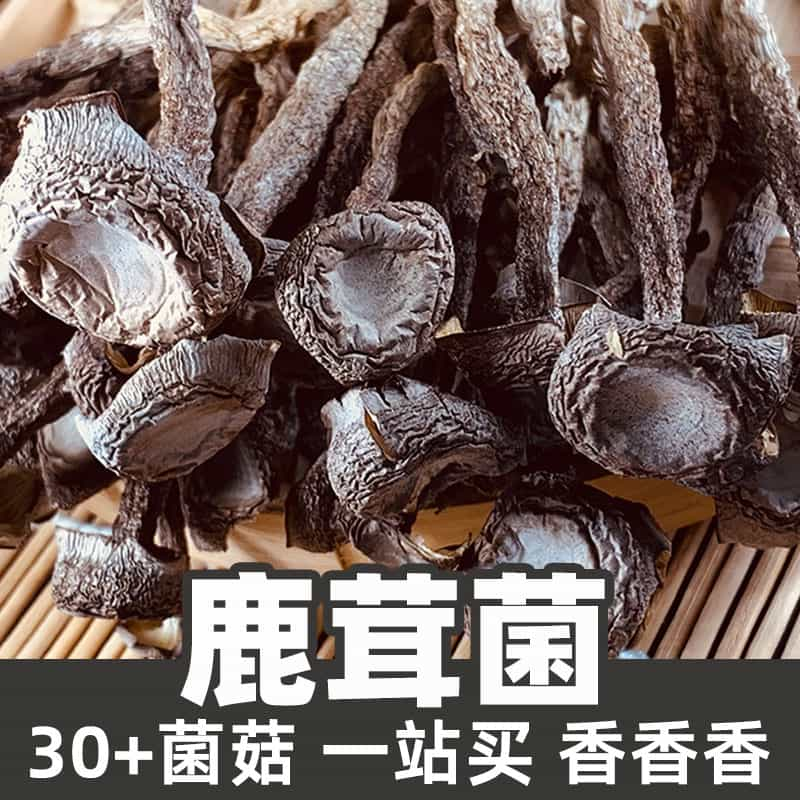Grifola frondosa, commonly known as the Hen of the Woods, is an edible fungus highly regarded for both its culinary and medicinal properties. This mushroom typically grows at the base of oak trees, where its unique frond-like structure—a mass of wavy, overlapping caps—makes it easily identifiable in the wild. Traditionally found in North America, Asia, and Europe, it has gained popularity in gourmet cuisine, offering a pleasant earthy flavor that complements various dishes. The primary active components of Grifola frondosa include polysaccharides, particularly beta-glucans, which are believed to enhance immune function and possess anti-cancer properties. This mushroom has been utilized for centuries in traditional medicine across various cultures, but modern research continues to investigate its potential benefits beyond nutrition. As the interest in natural health continues to grow, Grifola frondosa has become a staple in supplement form and health products. Whether consumed fresh or dried, the Hen of the Woods presents numerous applications in health and wellness as well as in culinary arts.
The nutritional composition of Grifola frondosa is rich and diverse, contributing to its value as both a food source and a health supplement. Its key active ingredients include polysaccharides, particularly beta-glucans, which play a crucial role in modulating immune responses and improving overall health. In addition, triterpenoids found within Grifola frondosa are known for their anti-inflammatory and potential anti-tumor activities. The glycoproteins present in the mushroom have shown promise in boosting the immune system and enhancing the body’s ability to fend off infections. Furthermore, the phenolic compounds found in this fungus are recognized for their antioxidant properties, which may help protect cells from oxidative stress. Grifola frondosa is also low in calories and high in dietary fiber, making it a nutritious addition to a balanced diet. The presence of essential amino acids and vitamins, including B-complex vitamins, adds to its nutritional profile. The combination of these constituents not only enriches its culinary appeal but also underlines its significance in promoting health and wellness for individuals seeking natural dietary options.
Grifola frondosa finds a variety of applications in both cooking and health. In culinary contexts, this mushroom is celebrated for its rich, savory flavor and meaty texture, making it an ideal ingredient in a range of dishes, from soups and stews to stir-fries and pasta. It can be sautéed, grilled, or used as a meat substitute in vegetarian and vegan recipes. Health-wise, Grifola frondosa is often marketed in supplement form, with extracts and powders aimed at enhancing immune support and overall wellness. Research indicates that the polysaccharides in this mushroom may contribute to enhanced immune function, potentially reducing the risk of infections and chronic diseases. Additionally, Grifola frondosa has been explored for its roles in cancer treatment support, with studies suggesting its compounds may have antitumor effects. Its antioxidant properties can also help combat oxidative stress, contributing to overall health. Consumers interested in natural remedies frequently incorporate Grifola frondosa into their diets or supplement regimens, benefiting from both its nutritional value and its potential therapeutic effects.
Grifola frondosa thrives in specific environmental conditions, typically found at the base of hardwood trees, especially oak, in temperate forests. This mushroom prefers moist, humid environments with well-drained soil, as these factors contribute to its growth and development. Its distribution is primarily concentrated in North America, Europe, and parts of Asia, where the climate and soil conditions are favorable. Grifola frondosa produces fruiting bodies in late summer to autumn, which is the peak time for wild harvesting. Its life cycle involves transitioning from a mycelial stage—where it breaks down organic matter—to the formation of conspicuous fruiting structures, which are sought after for their edible qualities. The geographical distribution of Grifola frondosa can vary based on local ecosystems, with it being more abundant in regions with rich biodiversity. Forest management practices can also affect its presence; healthy, undisturbed forests offer the best habitat for this unique mushroom to flourish.
Harvesting Grifola frondosa requires a keen eye and knowledge of its seasonal growth patterns. When foraging in the wild, care should be taken to select mature fruiting bodies, characterized by firm caps and fresh coloration. It is essential to avoid over-harvesting to ensure sustainability and preservation of the species in its natural habitat. Once harvested, Grifola frondosa can be processed in several ways. For immediate consumption, it can be cleaned and cooked; however, preservation methods such as drying are popular for long-term storage. Dehydrating the mushroom enhances its shelf life and concentrates its flavors, making it versatile for various culinary applications. To store dried Grifola frondosa, it should be kept in a cool, dark place within an airtight container to maintain its quality and flavor. Fresh specimens, on the other hand, can be stored in the refrigerator for a limited period, typically no more than a week. Proper handling during processing and storage is crucial to prevent spoilage and ensure that the beneficial properties of this mushroom remain intact for consumer use.
Monica Sun is a seasoned expert in the natural raw materials industry, with over a decade of experience specializing in traditional Chinese medicinal herbs, spices, and fungi. She is skilled in the sourcing, processing, and application of these materials, emphasizing sustainability and innovation. Monica Sun has contributed to the development of high-quality natural raw materials that serve as essential components in functional foods, pharmaceuticals, and cosmetics, delivering tailored solutions to meet diverse market needs.

















